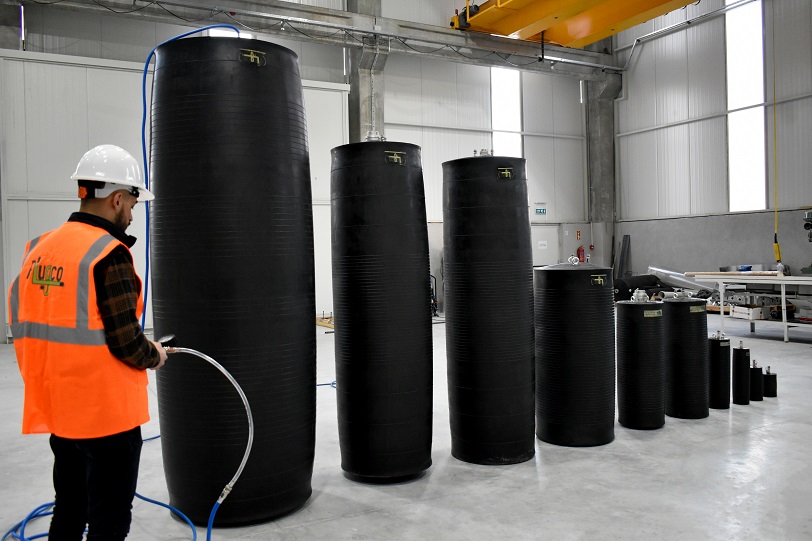Inflatable Pipe plugs are for temporarily blocking and stopping the flow in the pipe lines. These flows can be sewer, storm water, gas or oil. Also, they can be used for gravity pipelines leakage testing. These pipe plugs are generally inflatable products.
Pipe plugs are also considered as a dangerous tool, as it operates by compressed air, especially big size plug which can cause serious damage, if not treated and used as per the manufacturer’s safety instructions and user manual. Therefore, the end user must be well trained and take into consideration the control and the monitoring of plugs pressure during the application, specially if the plug will stay in the pipe for a long period of time.
Inflation pressure and back pressure are the most important parameters for pipe plugs application.
1. Inflation Pressure: The pipe plug inflation pressure should be same max allowable inflation pressure as mentioned on the plug. PlugCo always labels the product’s inflation pressure on it. The end user should inflate it accordingly. How will you check pipe plug inflation pressure? You can use PlugCo air control devices.
2. Back pressure: It refers to the height of the water column behind the pipe stopper. In other words, the pressure held by the pipe plug. If Pipe Stopper cannot hold the water behind it, it will slide in the pipe and may exit it. So, Pipe Stopper under pressure can be dangerous for the operators. How can you check back pressure? You can use PlugCo Monitoring and Alarm System
In the other hand, when Pipe Stopper is inflated by air, it creates pressure on the contact surface. If pressure exceed the maximum inflation pressure of Pipe Stopper, it will burst. That may cause death. So, over pressure/compressed air have to be discharged. It can be done by using PlugCo pressure control devices.
There are 7 different control devices in PlugCo range. Six of them for inflatable pipe plugs. One of them is for joint tester.
PlugCo offers below pressure control devices for inflatable pipe plugs;
| Model | Pressure Control System | Over Pressure Relief System | Pressure Monitoring System | Pressure Maintaining System |
|---|---|---|---|---|
Pressure Control Device 
|
Manual Control by Ball Valves | Manual Relief by Ball Valves | Analog Pressure Gauge | N/A |
Air Control Device with Pressure Relief Valve  |
Manual Control by Ball Valves | Automatically by Pressure Relief Valves | Analog Pressure Gauge | N/A |
Air Control Device with Pressure Regulator 
|
Manual Control by Ball Valves | Manually Setting the required pressure by regulator. Then, automatically not allowing the over pressure. | Analog Pressure Gauge | N/A |
Pressure Maintaining Device 
|
Automatic | Automatically by Pressure Relief Valves. | Analog Pressure Gauge | Mechanically Automatic. Pressure maintaining system by Pressure Relief Valve and Solenoid Valve |
| Pressure Monitoring System, PLC |
N/A | N/A | Monitoring via the display of the PLC, and Warning Alarm System for over pressure and pressure loss | N/A |
| Pressure Maintaining & Monitoring Device |
Automatic | Automatically by Pressure Relief Valves. | Analog Pressure Gauge, monitoring via the display of the PLC, and Warning Alarm System for over pressure and pressure loss | Mechanically Automatic. Pressure maintaining system by Pressure Relief Valve and Solenoid Valve |
